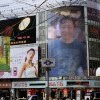Introduction to the Forex Market
The Foreign Exchange market, also referred to as the "Forex" or "FX" market is the largest financial market in the world, with a daily average turnover of US$1.9 trillion — 30 times larger than the combined volume of all U.S. equity markets.
"Foreign Exchange" is the simultaneous buying of one currency and selling of another. Currencies are traded in pairs, for example Euro/US Dollar (EUR/USD) or US Dollar/Japanese Yen (USD/JPY).
There are two reasons to buy and sell currencies. About 5% of daily turnover is from companies and governments that buy or sell products and services in a foreign country or must convert profits made in foreign currencies into their domestic currency. The other 95% is trading for profit, or speculation.
For speculators, the best trading opportunities are with the most commonly traded (and therefore most liquid) currencies, called "the Majors." Today, more than 85% of all daily transactions involve trading of the Majors, which include the US Dollar, Japanese Yen, Euro, British Pound, Swiss Franc, Canadian Dollar and Australian Dollar.
A true 24-hour market, Forex trading begins each day in Sydney, and moves around the globe as the business day begins in each financial center, first to Tokyo, London, and New York. Unlike any other financial market, investors can respond to currency fluctuations caused by economic, social and political events at the time they occur - day or night.
The FX market is considered an Over The Counter (OTC) or 'interbank' market, due to the fact that transactions are conducted between two counterparts over the telephone or via an electronic network. Trading is not centralized on an exchange, as with the stock and futures markets.
More information
For more background about the Foreign Exchange market, review the Federal Reserve Banks' "All About the Foreign Exchange Markets in the United States".
Understanding Forex Quotes
Reading a foreign exchange quote may seem a bit confusing at first. However, it's really quite simple if you remember two things:
1) The first currency listed first is the base currency
2) the value of the base currency is always 1.
The US dollar is the centerpiece of the Forex market and is normally considered the 'base' currency for quotes. In the "Majors", this includes USD/JPY, USD/CHF and USD/CAD. For these currencies and many others, quotes are expressed as a unit of $1 USD per the second currency quoted in the pair. For example, a quote of USD/JPY 110.01 means that one U.S. dollar is equal to 110.01 Japanese yen.
What is a pip?
In the Forex market, prices are quoted in PIP. Pip stands for "percentage in point" and is the fourth decimal point, which is 1/100th of 1%.
In EUR/USD, a 3 pip spread is quoted as 1.2500/1.2503
Among the major currencies, the only exception to that rule is the Japanese yen. In USD/JPY, the quotation is only taken out to two decimal points (i.e. to 1/100 th of yen, as opposed to 1/1000th with other major currencies).
In USD/JPY, a 3 pip spread is quoted as 114.05/114.08
When the U.S. dollar is the base unit and a currency quote goes up, it means the dollar has appreciated in value and the other currency has weakened. If the USD/JPY quote we previously mentioned increases to 113.01, the dollar is stronger because it will now buy more yen than before.
The three exceptions to this rule are the British pound (GBP), the Australian dollar (AUD) and the Euro (EUR). In these cases, you might see a quote such as GBP/USD 1.7366, meaning that one British pound equals 1.7366 U.S. dollars.
In these three currency pairs, where the U.S. dollar is not the base rate, a rising quote means a weakening dollar, as it now takes more U.S. dollars to equal one pound, euro or Australian dollar.
In other words, if a currency quote goes higher, that increases the value of the base currency. A lower quote means the base currency is weakening.
Currency pairs that do not involve the U.S. dollar are called cross currencies, but the premise is the same. For example, a quote of EUR/JPY 127.95 signifies that one Euro is equal to 127.95 Japanese yen.
When trading forex you will often see a two-sided quote, consisting of a 'bid' and 'ask':
The 'bid' is the price at which you can sell the base currency (at the same time buying the counter currency).
The 'ask' is the price at which you can buy the base currency (at the same time selling the counter currency).













No comments:
Post a Comment